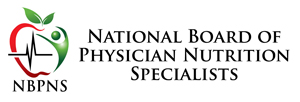Clinical algorithms, practice standards, position papers
Terminology
- Growth Failure, Failure to Thrive, Growth Faltering
- Protein Energy Malnutrition = final common pathway
I. Definitions & Characterizing Growth Patterns
Progression of “Simple” Undernutrition:
Weight for age Þ ê Length/height for age Þ ê Head Circumference
Weight faltering (wasting):
- Crossing > 2 major percentile groups (wt for age)
- Rate of weight gain < normal for age
- Weight/length < 5th %ile
Implies ~ acute undernutrition, esp. inadequate energy intake Length/height faltering (stunting):
- Mild: 90-95% of median (50th %ile)
- Moderate: 85-89% of median
- Severe: < 85%
Implies chronic undernutrition
DDX: endocrinopathy, IUGR, constitutional, IBD, chronic illness, etc
¯ Head Circumference:
- consider congenital infection
- intrauterine or early post-natal insult
- chronic undernutrition
% Ideal Body Wt (50th %ile wt/len):
- Normal: > 90% of median (50 th %ile)
- Mild: 81-90%
- Mod undernutr: 70-80%
- Severe undernutr: <70%
Why characterize the extent of malnutrition?
- Severity of problem – Urgency of intervention
- Type of intervention – Set goals for catch-up
II. Evaluation of Growth Problems
History
- Growth
- Nutritional
- Medical
Anthropometry
Physical Exam
Laboratory Evaluation
HISTORY, HISTORY, HISTORY…
History sh/b seeking explanation for
Growth hx: chronicity & pattern poor growth: poor intake, increased requirements, increased losses
Nutrition hx:
- Early feeding – breastfeeding or formula;
- Introduction of solids – good acceptance? Progression in variety?
- Introduction of self-feeding – when, how much?
- Intake – record/recall; types/amounts; amount of formula/milk, juice, water
- Routines – grazing? Eating during the night?
Medical Hx:
- PG/birth, health, development, habits*, meds/supplements, allergies, ROS (DDx for non-organic causes)
* Beware the ” PESTT !!” (Poor Eaters & Sleepers, & Temper Tantrums)
Social hx: (more than pets & tobacco!!)
- Who’s at home
- Employment/finances
- Living conditions
- Stresses & supports
Vulnerable ages and environments, risks associated with each, according to developmental stage:
| Age | Psych/
Developmental Stage |
Motor Skills | Feeding & Eating
Issues |
Nutritional
Issues |
| 0-2 mo | homeostasis | Suck-swallow, oral motor | Infant determines amount, timing | Rapid growth,
Relatively high needs |
| 2-6 mo | attachment; develop trust; positive interaction | “ | “ | Growth
rate slows some |
| 6-16 mo | Separation | ¯ sucking;
ability to sit; hands/toys/food to mouth pincer grasp |
Introduction of solids; cup;
finger-feeding new tastes, textures; neophobia |
¯ Growth rate; activity ; appetite ¯ ;
Iron, zinc |
| 16-36 mo | individuation;
autonomy; distractibility |
Refining skills | Self-feeding (utensils, cup);
food jags routine/structure |
POC: offer good choices; structure
Child: determines amount |
PARENTS “job” to provide good structure, healthful choices, security;
CHILD’s “job” to determine how much to eat
Fine line exists between structure and control …empower parents to learn the difference!
Profiles of causes/environments associated with growth failure:
1. Nutritional Ignorance
- Inadequate amounts or types of food (including inadequate/inappropriate breastfeeding)
- Unusual types of foods/diets (e.g. perceived allergies, delayed introduction of complementary foods, “health food” beliefs)
2. Family Chaos
- Inconsistent feeding (e.g. grazing)
- Changing sites & times of feeding
- Multiple feeders
- Unstable home environment
3. Child/Parent Conflict
- Poor eating behavior
- Meal time disruption (e.g. TV on, no one eats w/ child, eating “on the go”, etc)
- Poor limit setting (meals last an hour, toddler up & down from table, child throws food)
Mother/Child [mis]Matches – Set-ups for problems!
Mother Child
- Adequate Easy going/docile
- Marginally adequate Sometimes difficult
- Inadequate Difficult
ANTHROPOMETRY : (Weight, length/height, OFC – see above)
PHYSICAL EXAM:
- wasting of fat vs muscle mass (consider skinfold measurements)
- developmental level/neurologic deficits;
- oral-motor control, coordination
- evidence of nutritional deficiencies (pallor, rash/lesions, edema, ¯ DTR’s) &/or disease process?
FEEDING OBSERVATION: Child’s motor skills, approach to food, interaction with POC, etc
LABORATORY SCREENING:
- blood (cbc, electrolytes & bicarb, + LFT’s, + TFT’s)
- urine (UA, + Ucx)
- stool (r/o fat, blood)
A few words on micronutrients, esp Iron & Zinc:
Iron deficiency:
- Increasing risk in latter part of first year of life for breastfed infant without dietary source (other than human milk); risk for infant fed standard Fe-fortified formula low;
- Effects : anemia, neuro-cognitive delays, poor growth;
- Good weaning foods: iron-fortified cereal, meats; supplement if deficient
Zinc deficiency:
- Increasing risk by mid way-latter part of first year of life for breastfed infants if no dietary source (besides human milk); risk for formula fed infants low ;
- Effects : slow growth & anorexia; immune deficits, neuro-cognitive delays;
- Good food sources : animal products, esp meats (beef/pork >>chicken/fish);
Rx: 1 mg elemental Zn/kg/day, ideally divided BID
III. THERAPY AND MONITORING
- Good Medical Care
- Diet
- How to set goals (esp w/ IBW) to achieve “catch-up” growth
- High calorie foods – (e.g. Carnation Instant Breakfast, added oil/margarine); limit juice: 0-6 oz/d
- Increased intake
- Micronutrient supplements if indicated (see Fe & Zn above)
- Education of family about good child nutrition, reasonable expectations
Behavior/Parenting
- Food/eating habits – 3 meals/2-3 snacks by ~ 1 yr,
- Feeding routines – high chair/table, TV off, simple & familiar foods, eat w/ others; reduce pressure on child
- Limit setting – avoid short order cook routine; meals last ~ 15 min
- Role modeling
Family Support
- Other therapies/services as indicated: OT, social work, day care?
- Support parents – positive approach rather than judgmental
How do we define success?
- Normal development
- Establishment of healthy eating patterns/behaviors
- Interrupt/reverse “faltering” on growth chart; (may not see true “catch-up” or normalization)
- Less parental anxiety
Other issues for discussion:
When to consider tube feedings – NG/GT (severe undernutrition, developmental delays, need for long-term support)
When to consider hospitalization – severe undernutrition &/or need for diagnostics; limited value for “observation” (abnormal situation; not likely to observe usual dynamics)
